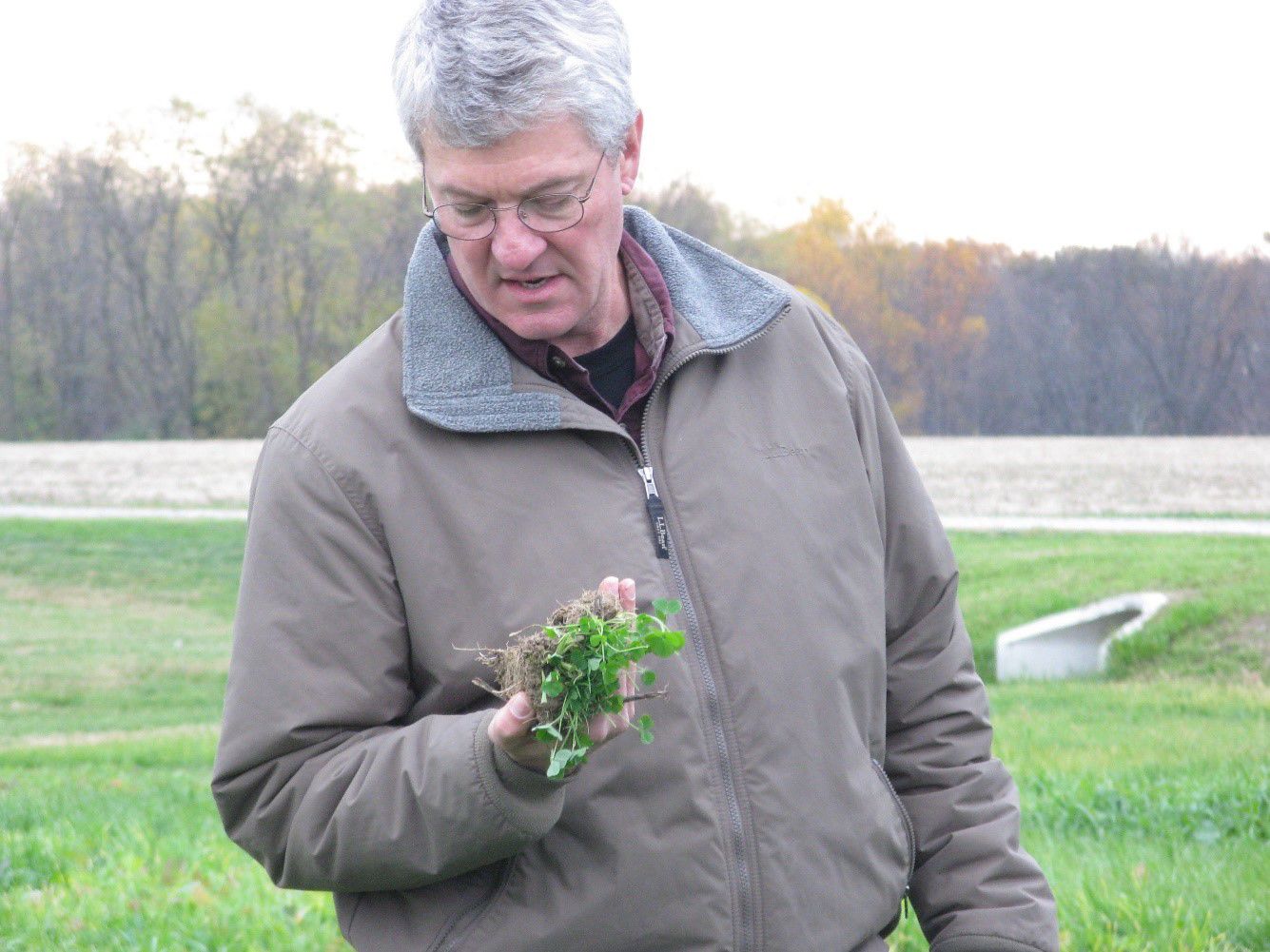More than half of all cropland in the United States is rented. This means the person who owns the land—a non-operator landowner—is often separate from the farmer making daily management decisions that have long-term impacts on the land.
If you are one of those landowners, you may not be thinking about your soil and how it is managed. Your soil is your most valuable asset, and building soil health is a capital improvement. It is an investment—in your land’s long-term productivity and resiliency.
How can non-operator landowners and tenant farmers work together to build land that’s healthy, resilient and productive?
Barry Fisher, an Indiana farmer and nationally-recognized soil health specialist with USDA’s Natural Resources Conservation Service, recommends that non-operator landowners ask their farming partners these five questions.
1. Do you build organic matter in the soil?
Organic matter—carbon—may be the most important indicator of a farm’s productivity. The amount of soil organic matter often determines the price farmers will pay to rent or buy land.
“Finding a farmer who is interested in building organic matter by using practices like no-till and cover crops is like finding a bank with a better rate on a Certificate of Deposit,” Fisher says.
2. Do you test the soil at least once every four years?
Optimizing fertility and pH levels is important to your farm’s productivity. Regular soil testing can give an indication of trends in soil fertility, pH, and levels of organic matter in a field. These tests help determine the amount of fertilizer each field needs and potentially saves money for farmers on fields with adequate or high fertility.
New soil tests that indicate active carbon levels and populations of important soil biology are also available to help monitor soil health. If a field has a history of manure application and very high fertility, for instance, a farmer could potentially plant cover crops to keep those nutrients in place rather than applying more nutrients that may not be needed.
3. Do you use no-till practices?
Some landowners like the look of a clean-tilled field in the springtime. But that “nice look” can be very short lived.
“The reality is, a field that has bare soil is subject to erosion and loss of organic matter since it no longer has the protective cover from the crop residue on the surface,” Fisher says. “No-till farming utilizes the crop residue to blanket the soil surface and protect it from the forces of intense rainfall and summer heat. This protective blanket will conserve moisture for the crop and prevent loss of soil from wind or water erosion.”
4. Do you plant cover crops?
Cover crops provide a green, protective blanket through the winter months or fallow times.
“The green-growing cover is collecting solar energy, putting down roots and providing habitat when the soil would otherwise be lifeless and barren,” says Fisher. “This habitat provides food and shelter for a broad population of wildlife above ground and beneficial organisms below ground.”
Cover crops hold onto nutrients left from the previous crop and release them to the next crop. The solar rays these plants collect are powering photosynthesis, taking in carbon dioxide from the atmosphere to produce food for organisms living in the root zone. Cover crops also build nutrient-rich organic matter in the soil and improve the soil’s ability to take in water.
Cover crops can be used to reduce soil erosion, improve nutrient cycling, build soil organic matter, and improve the soil’s ability to take in water.
5. What can we do together to improve soil health on my land?
According to Fisher, the duration of the lease agreement is perhaps the most critical matter in encouraging the adoption of soil health management practices.
“Farmers can actually build the production capacity and resiliency of their landowner’s soil, but it may take several years to realize the full benefits of doing so,” Fisher says. He suggests that landowners consider multi-year leases to provide tenure security for the tenant. Longer tenures give both landowners and tenants more opportunities to improve soil health and benefit from the resulting production and profitability gains.
“Improving soil health can provide long-term, stable dividends for you, your family, and your farming partner,” Fisher says. “Improving soil health also can decrease the effects of flooding, make food production more resilient to weather extremes, and improve the health of water and wildlife.”
Fisher encourages landowners to learn more about the basics and benefits of soil health management systems and begin the soil health discussion with their farming partners right away.
“Whether you own or rent your land, everyone has a great stake in improving the health of our soils,” he says.




